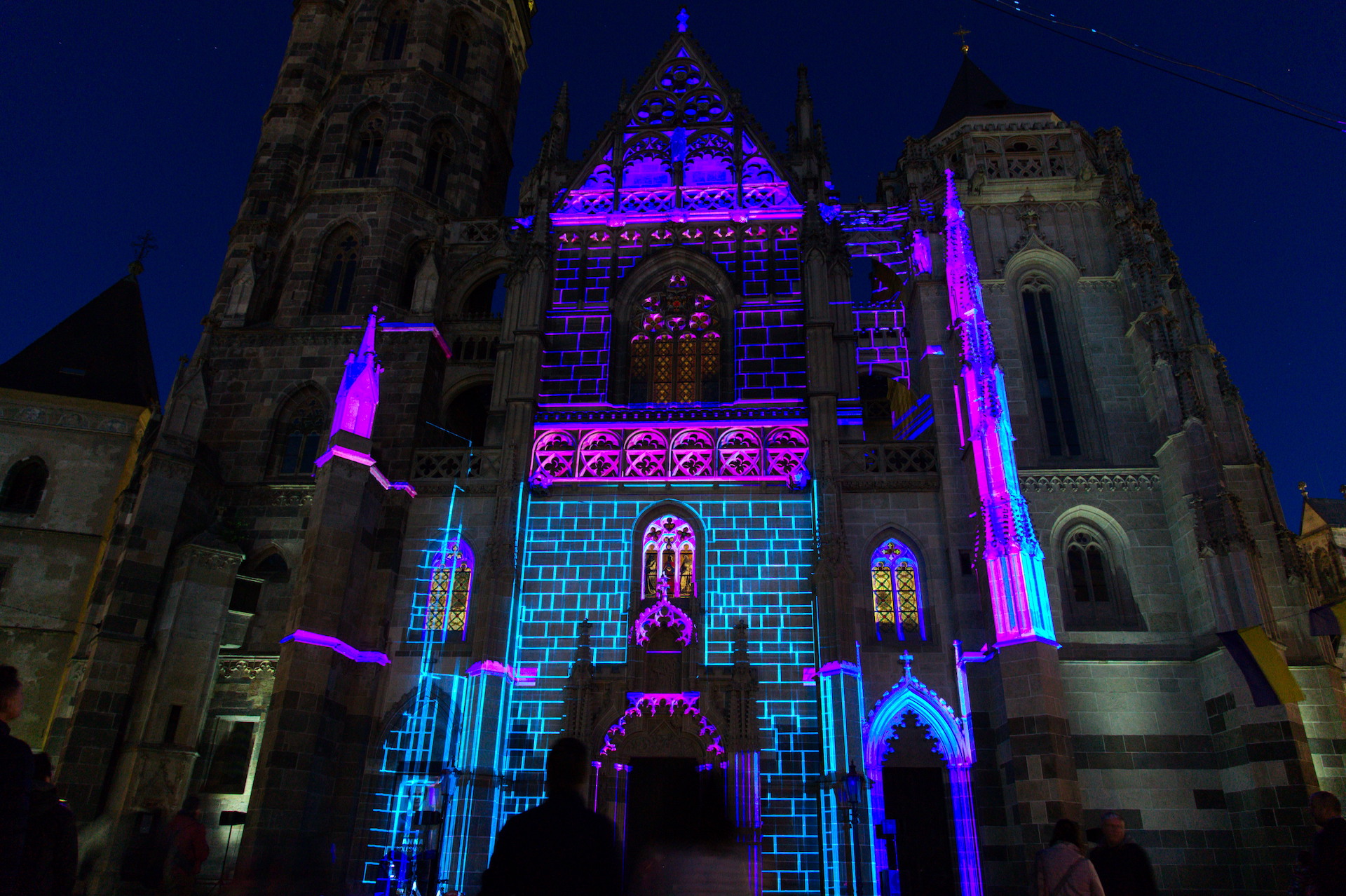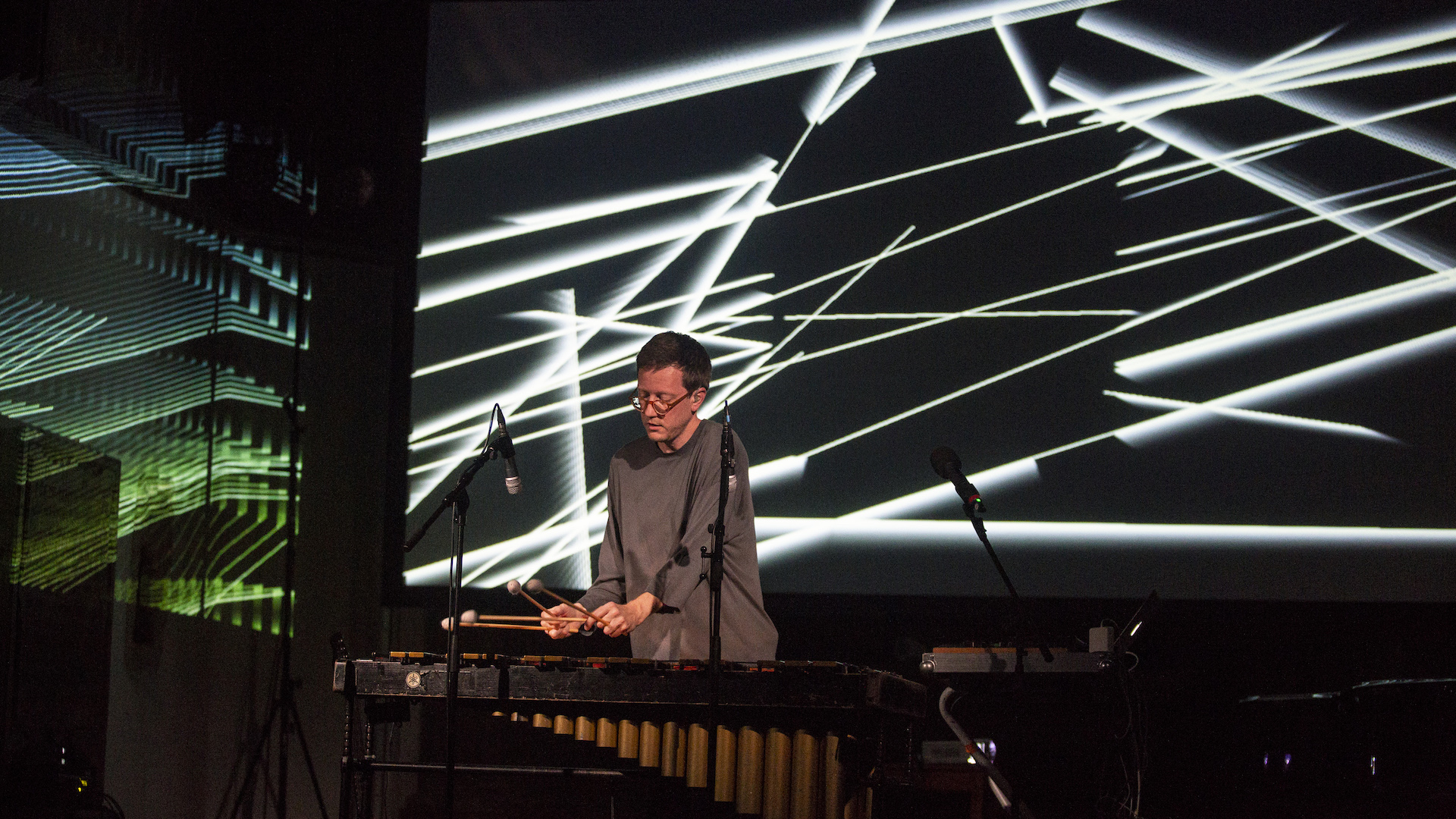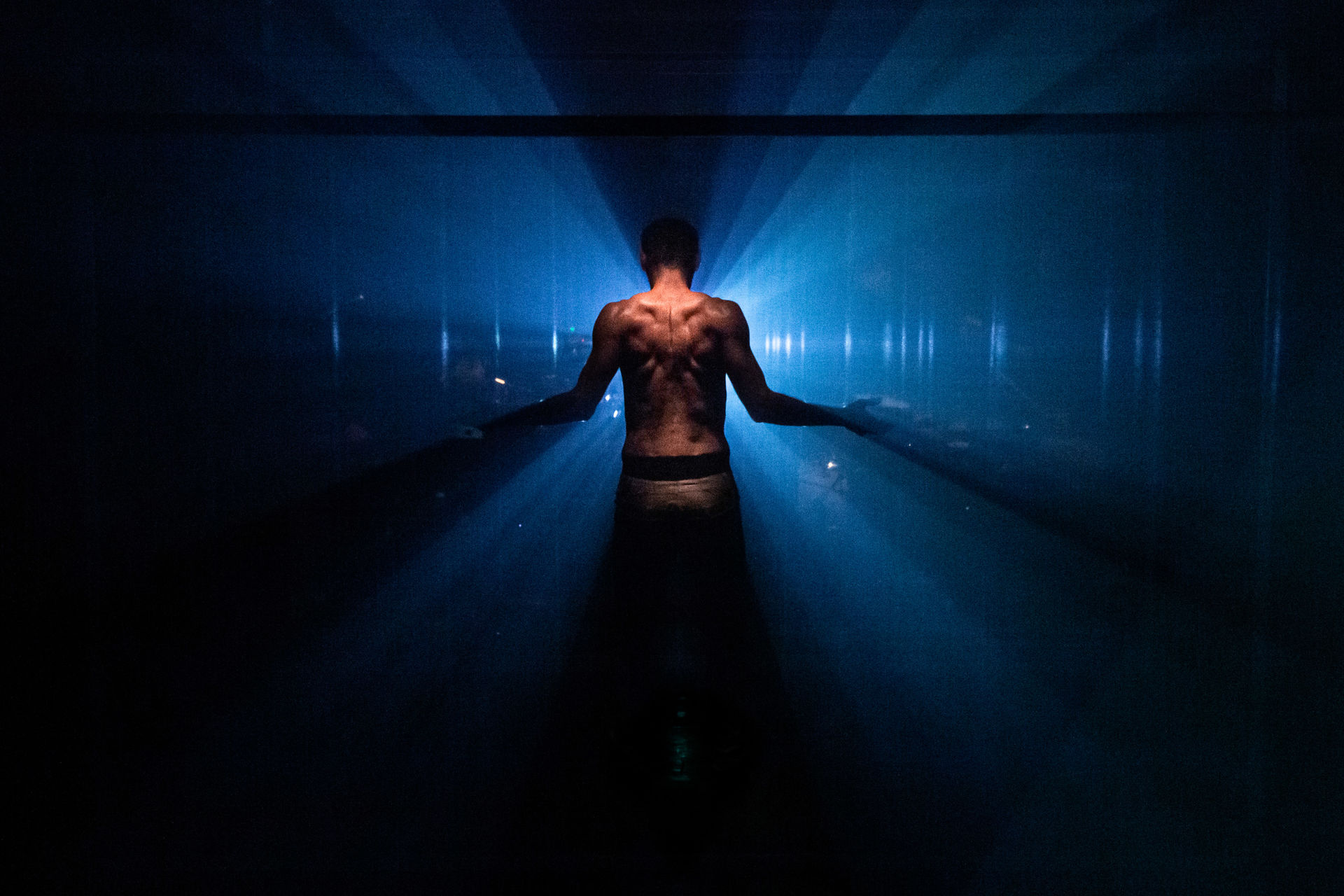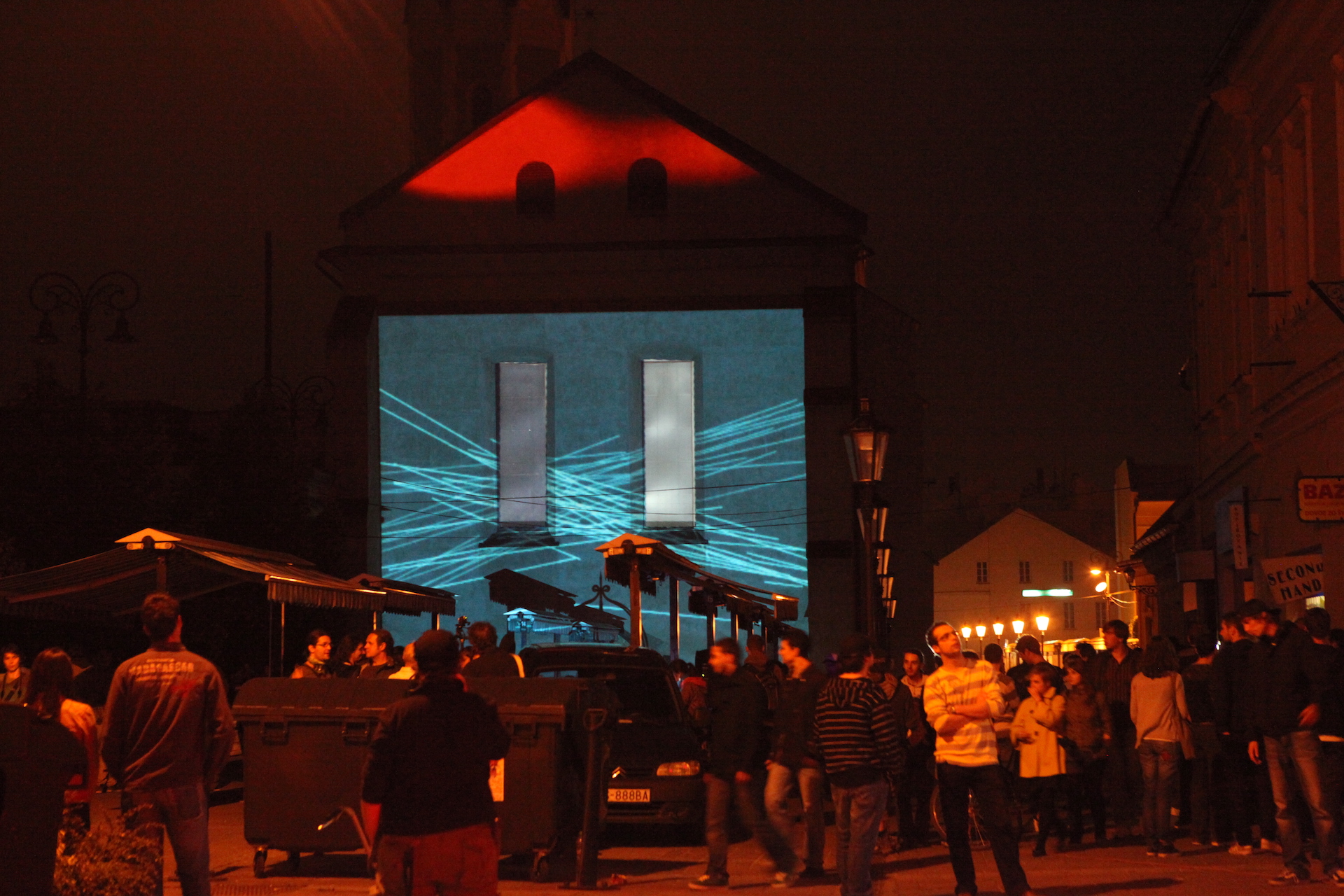They have been working with video mapping in Slovakia for 10 years now. Meet Nano vjs
Nano vjs is an artistic group of visual artists who work with video mapping. They presented their media works during some famous Košice festivals such as White Night or at the largest Slovak music festivals Pohoda and Grape. Find the team’s answers in the following interview regarding topics such as cooperation, 3D animations, and live visuals.
Who are Nano vjs?
B: Nano vjs is a visual team working in the field of media art in Košice since 2010. It currently consists of Beáta Kolbašovská, Jakub Pišek and Šimon Mészáros. We met at the university while studying new media, sculpture, and animation. We focus on video mapping, live visuals, and art in public spaces in Slovakia and abroad. Within Nano vjs, we cover the visual part; we cooperate with musicians, performers, instrumentalists, actors, and dancers.
J: In 2008, I started developing video mapping software. Artist Boris Vaitovič came up with the idea for a grant, thanks to which we rented a projector suitable for video mapping and tried to project it on the Dominican Church. We called this event Nanometers Paradise, and I consider it the very beginning of Nano vjs. It stimulated the creation of the team we are known today.
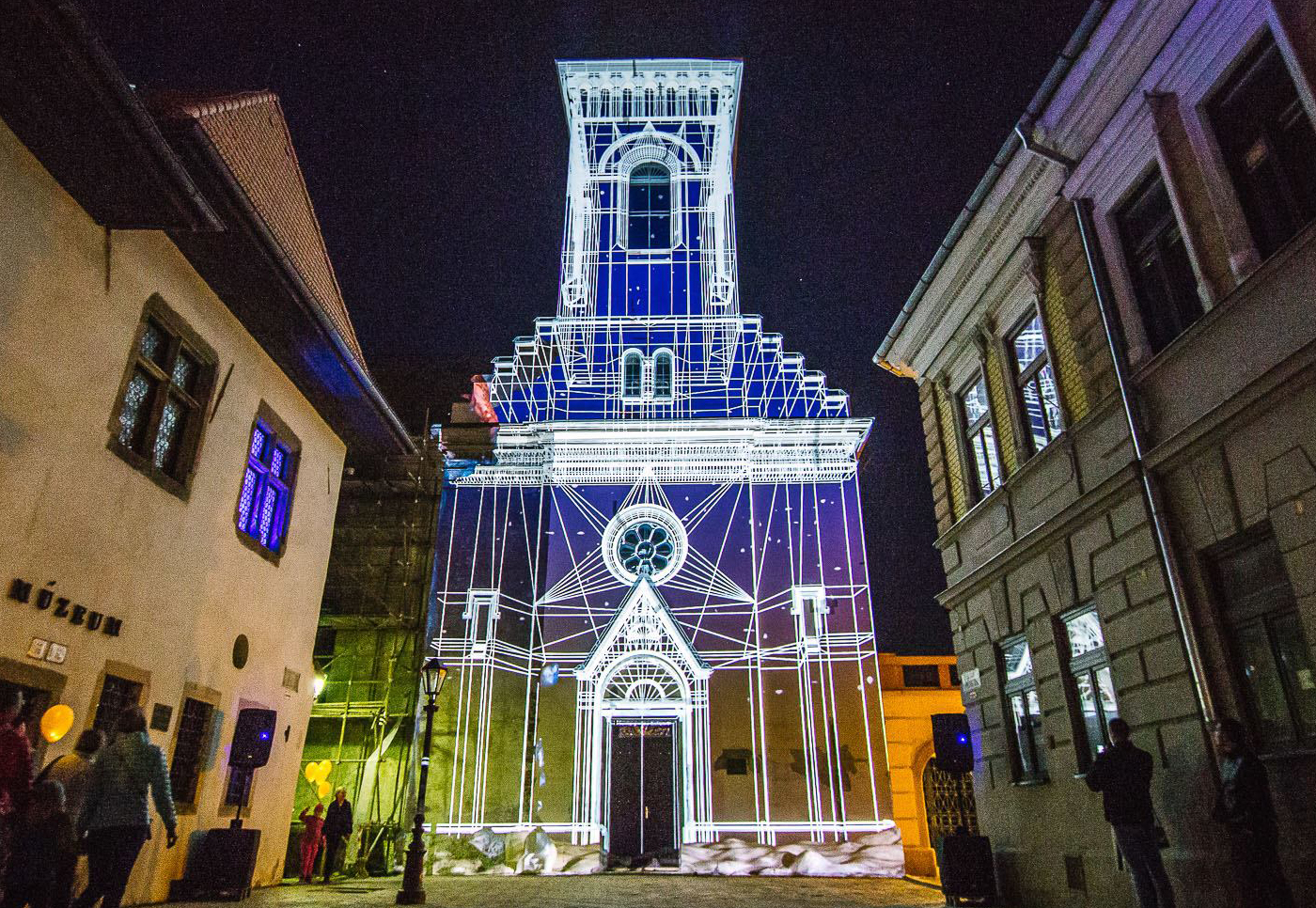
What does one need in order to work on video mapping?
J: If we talk about video mapping, it is necessary to master several disciplines. In my opinion, an individual/one person is not enough for such a thing; the preparation of a 5-minute performance usually requires many more people who participate in its individual tasks. In my opinion, the most important thing (apart from technical things) is to master 3D graphics, from which the artist can construct a short show.
3D graphics can be created in any program like Blender, 3ds Max, Maya. We work mainly with Blender, which is open source. One part of our work involves preparation, and the other is the projection itself. Nano vjs work with software that I developed in 2010 before Nanometers Paradise. These options work great for us, and at the same time, we don’t have to pay for commercial products.
B: Everyone who wants to start doing video mapping needs a lot of patience and great determination. It’s not easy, and it takes a lot of time. The person who wants to do it must, above all, believe in it and know why he/she is doing it. We do mapping through 3D animation, which demands technical issues such as rendering, time, and the creation of the visual motif itself.
How does the cooperation with other artist look like?
J: Our activities combine several disciplines. Video mapping for architecture is just one of them; we also work for exhibition activities, theater, and classic vj-ing for the party. In that way, we work with musicians, ideally with those with whom we communicate best about what the final result should look like. VJ-ing in collaboration with local musicians such as Michael Kelso or Dead Janitor differs from video mapping on architecture, which requires much longer preparation. It is usually a 5 to 10-minute show that is repeated in a loop on the facade.
We take the dramaturgy into account more so that it all makes sense to us and fits together. If our budget allows, we have custom-made songs. We often work with Dalibor Kocian; he goes under the artistic name Stroon. It works both ways – we call him to help us with the mappings, and he invites us to his concerts.
B: The difference is that video mapping for architecture is created months in advance, and live visuals are created on the spot. In cooperation with Dead Janitor, we created a video mapping for St. Elizabeth’s Cathedral during the last White Night in Košice.
How do you make up a topic for a 3D animation?
B: For mappings, our projects are site-specific. This means that we are based on what the real facade looks like. Later we make a 3D model, from which visual content is created directly customized for each facade. The motifs are created directly from the facade’s architectural elements; the topics depending on the theme of the festival/art event. For example, we plan to screen in the courtyard of the East Slovak Gallery as part of the cycle The End of the Planet (Zánik planéty), so we have worked on an ecological theme. However, everything depends on the space we work with.
J: If the topic is not given, we thematically focus on the facade itself – the history of the building or the graphic motifs that are on it. Architecture is a topic in itself. The motives, therefore, come quite naturally. The first thing we build for the new project is a 3D model of the facade. The most important factor in our work concerns the content that follows the common agreement and a certain procedure that we follow during the creative process. We decide on a point from which the show will be projected, and all three of us start to work from that point. From this moment, we focus on the content, followed by editing, and the last phase is the final screening.
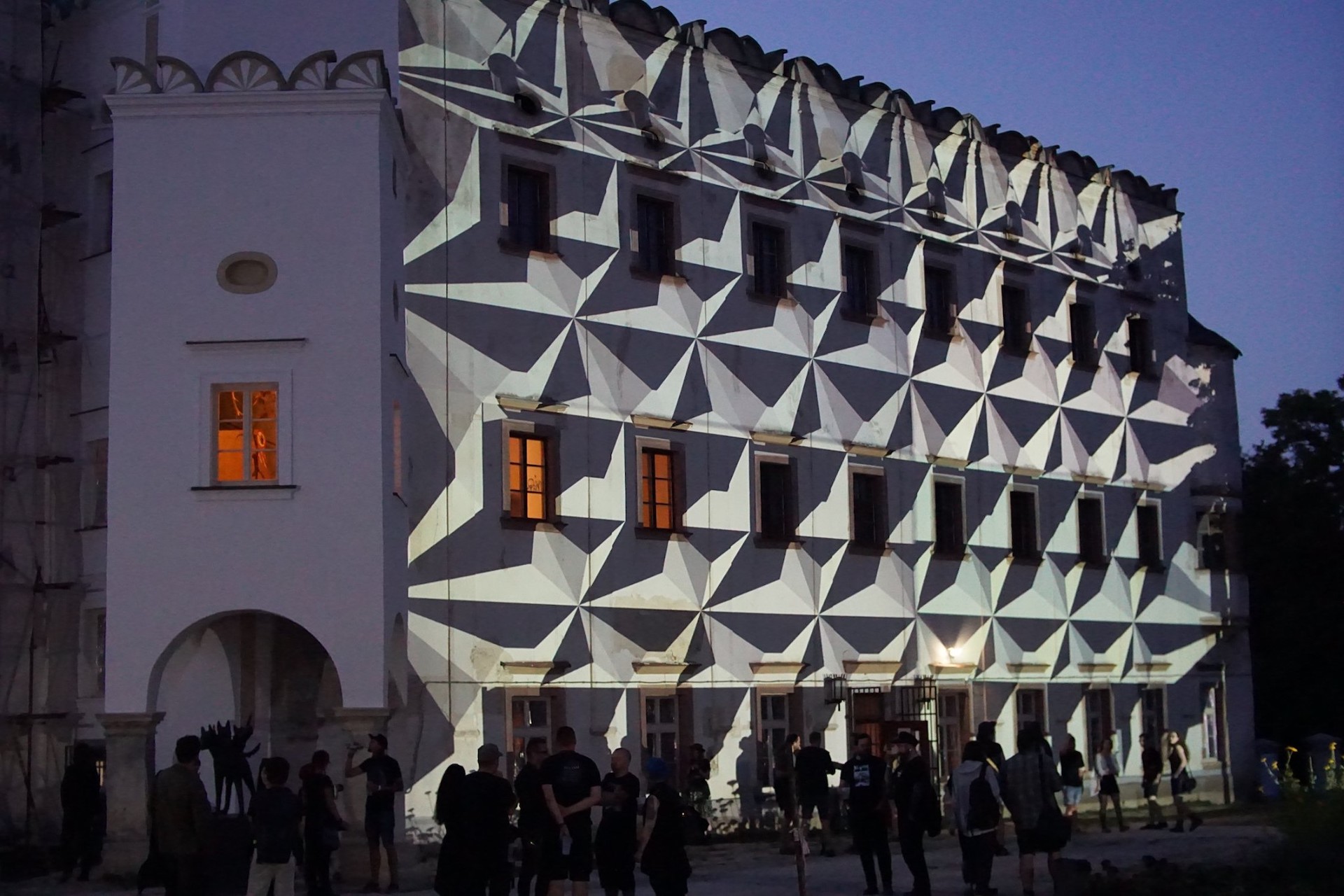
Which were the most successful events for you?
B: The last White Night in Košice and our video mapping at St. Elizabeth’s Cathedral. The preparation for this event took us about half a year. For me personally, it was our groundbreaking performance. I also like to mention participating in big festivals like Pohoda and Grape or, more alternatively, Hradby samoty. We were happy to take part in the Krepí festival in the independent cultural center Záhrada in Banská Bystrica, and we started with vj-ing in the Wave cultural center in Prešov. Nanometers Paradise in 2010 was one of the first video mappings that took place in Slovakia.
J: For me, it was definitely Nanometers Paradise, as it played a key role in shaping our work into the Nano vjs team. At Pohoda, I had the opportunity to play on a big stage, whilst Bea had the same opportunity. An important milestone was also the first major mapping during White Night when we screened on the Calvinist Church. We worked with a new generation of projectors then. It was our first White Night and, at the same time, the first event when it was impossible to walk among people.
What topics or buildings would you like to work on the most?
B: There are several such things. In the past, for example, we wanted to project on the Ľudovít Fulla Gallery in Ružomberok. This year, it will finally happen as part of the event in honor of this artist. We will use elements of his drawing and the mosaic, which is on the gallery’s facade.
What are your plans for the future?
J: The premiere of the new opera Roberto Devereux at the State Theater in Košice, for which we prepared the entire video scenography.
B: In addition to the mentioned video mappings in Slovak galleries, we are preparing for an artistic summer residency in the cultural center Nástupište 1-12 in Topoľčany. We will work with a Japanese animator and a Swedish musician. Besides, we have established cooperation in Amorbach, Germany, and Nova Gorica, Slovenia, which is currently limited because of the pandemic situation.
